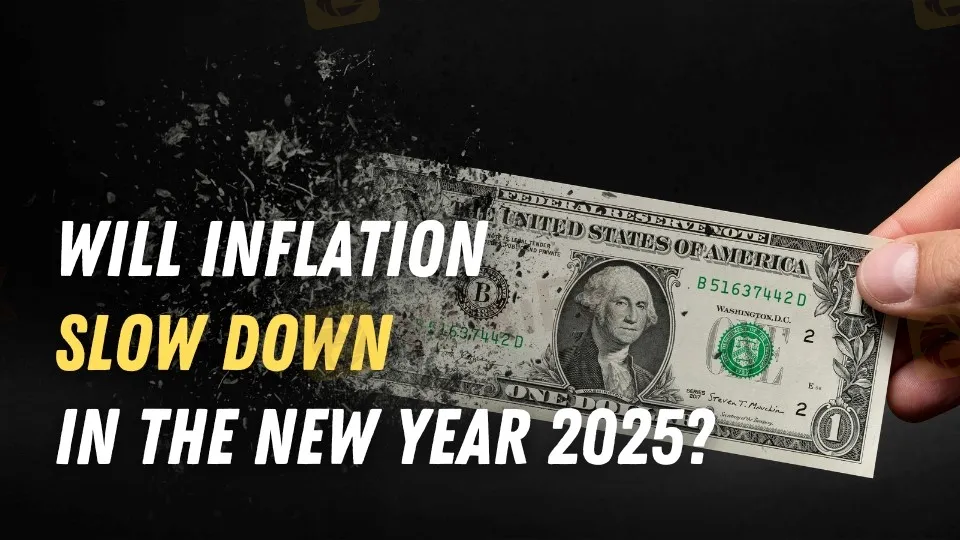简体中文
繁體中文
English
Pусский
日本語
ภาษาไทย
Tiếng Việt
Bahasa Indonesia
Español
हिन्दी
Filippiiniläinen
Français
Deutsch
Português
Türkçe
한국어
العربية
Will Inflation Slow Down in the New Year 2025?
Abstract:Will inflation slow down in 2025? Experts weigh in on projections, economic policies, and potential impacts, offering insights into what the new year may hold.

Inflation dominated economic debates in 2024, and analysts say it will be a major worry in 2025. Inflation projections vary greatly, affected by economic policy, global trade dynamics, and consumer behavior. The Federal Reserve and independent economists have provided several projections, providing a complicated picture of the coming year.
Inflation Forecasts for 2025
The Federal Reserve expects core Personal Consumption Expenditures (PCE) inflation to reach 2.5% in 2025, then fall to 2.2% in 2026, and converge with the long-term target of 2% by 2027. Bloomberg polled independent economists, who were slightly less hopeful. While they agree on a 2.5% core PCE inflation rate in 2025, they expect a slower decrease, with inflation settling at 2.4% in 2026.
President-elect Trump's economic proposals, including tariffs on China and other trading partners, probable immigration restrictions, and corporate tax cuts, have been flagged as possibly inflationary. These actions have the potential to aggravate price pressures and delay consumer relief.

Diverging Economic Outlooks
Some analysts, notably Nobel Prize-winning economist Joseph Stiglitz, are more pessimistic. Stiglitz has warned of a potential “inflationary spiral” that could result in retaliatory trade wars, impacting economic development. Similarly, BNP Paribas predicts that inflation will climb sharply from late 2025 to 2026. The Consumer Price Index (CPI) is expected to rise to 2.9% by the end of 2025 and 3.9% by the end of 2026, according to the BNP. The business also anticipates the Federal Reserve to keep interest rates unchanged until 2025, with no monetary easing.
Deutsche Bank shares the BNP's prediction, while other Wall Street firms anticipate two to three rate cuts in 2025, which is more in line with the Federal Reserve's projections. This discrepancy highlights the uncertainties surrounding inflationary trends.
Consumer and Market Effects
Consistent price increases in industries such as housing, insurance, and healthcare are likely to keep consumer spending under pressure. Shelter costs are likely to fall slightly in 2025, but they may stay high, adding to sticky inflation in the services sector. This could result in minimal respite for everyday bills.
There are certain advantages, though. The US economy has exhibited amazing resiliency, with strong growth, healthy consumer spending, and low unemployment rates giving a solid platform for 2025.
Final Thoughts
While estimates vary, the agreement is that inflation will be a significant issue in 2025. Key factors influencing price trajectory include trade policy, labor market developments, and Federal Reserve decisions. As consumers and businesses negotiate the uncertainty of the new year, they will need to keep an eye on these trends.

Disclaimer:
The views in this article only represent the author's personal views, and do not constitute investment advice on this platform. This platform does not guarantee the accuracy, completeness and timeliness of the information in the article, and will not be liable for any loss caused by the use of or reliance on the information in the article.
Read more

Silver surges past $33—are you ready for what comes next?
Silver has once again become the center of attention in global financial markets.

171 years! One of this country’s largest crypto-related fraud
A federal court in Brazil has handed down one of the harshest sentences in the country’s history for a crypto-related fraud, jailing three executives of the now-defunct Braiscompany scheme to a combined 171 years behind bars. The case, which saw some 20,000 investors lose approximately R$1.11 billion (about USD 190 million), underscores Brazil’s intensifying crackdown on unregulated cryptocurrency operations

You need to know this if you are losing money in forex trading!
If you’re losing money in forex trading, you’re far from alone: data from major brokers show that approximately 70 % to 80 % of retail Forex traders end up losing money. This article explores the most common reasons behind trading losses and provides actionable strategies to help you turn your losing streak into a learning opportunity rather than a financial drain.

Protect Your Portfolio in the Storm | What Are Safe Haven Assets?
Gold surged to an all-time high on Tuesday, driven by renewed weakness in the US dollar, ongoing trade war tensions, and critical remarks from President Donald Trump aimed at the Federal Reserve. These factors fuelled strong demand for safe-haven assets, pushing bullion above US$3,485 an ounce for the first time. But what exactly are safe haven assets? Why is everyone raving about them?
WikiFX Broker
Latest News
FCA Issues Alerts Against Unauthorised and Clone Firms in the UK
Consob Orders Blackout of 9 Fraudulent Financial Websites
eXch Exchange to Shut Down on May 1 Following Laundering Allegations
How a Viral TikTok Scam Cost a Retiree Over RM300,000
FCA Proposes Simplifying Investment Cost Disclosure for Retail Investors
JT Capital Markets Review
Fresh Look, Same Trust – INGOT Brokers Rebrands its Website
Tradu Joins TradingView for Seamless CFD and Forex Trading
Japan Issues Urgent Warning on $700M Unauthorized Trades
Silver surges past $33—are you ready for what comes next?
Currency Calculator


